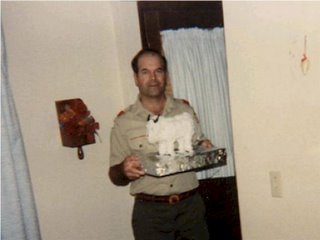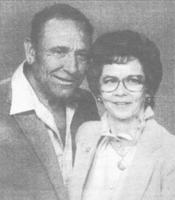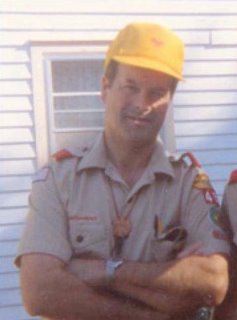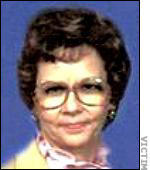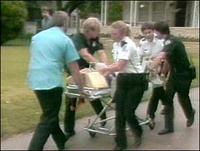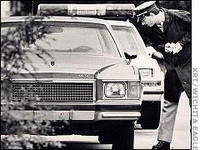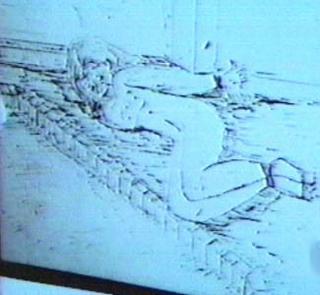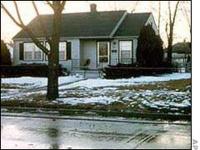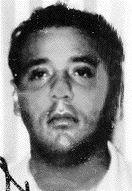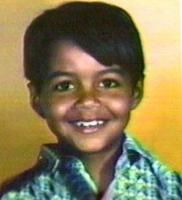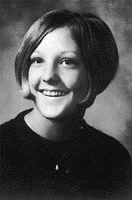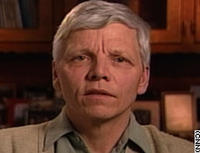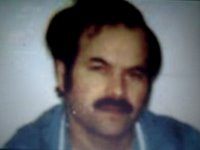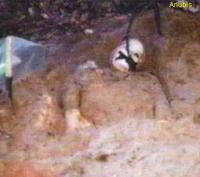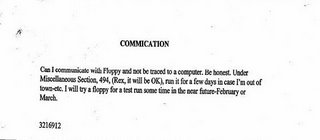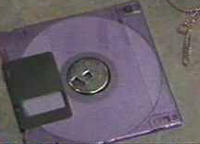Childhood, Adolescence, Adulthood pre-1974.
 Dennis Rader was born in a quiet corner of Kansas, close to where Kansas, Oklahoma and Missouri all meet, on March 9, 1945. He was the first of four sons born to William and Dorothea Rader. He was baptized at Zion Lutheran Church in Pittsburg, Kansas. His father was a member of the US Marine Corps, who later worked for the electric utility KG&E starting in 1948. The family moved to the largest city in Kansas, Wichita, when Dennis was a young boy. The Raders settled into a modest but pleasant home on N. Seneca Street, which remained continually as a Rader household until sold in 2005.
Dennis Rader was born in a quiet corner of Kansas, close to where Kansas, Oklahoma and Missouri all meet, on March 9, 1945. He was the first of four sons born to William and Dorothea Rader. He was baptized at Zion Lutheran Church in Pittsburg, Kansas. His father was a member of the US Marine Corps, who later worked for the electric utility KG&E starting in 1948. The family moved to the largest city in Kansas, Wichita, when Dennis was a young boy. The Raders settled into a modest but pleasant home on N. Seneca Street, which remained continually as a Rader household until sold in 2005.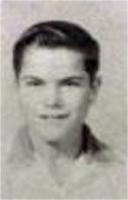 As a child, Dennis Rader appeared outwardly normal and unremarkable. He joined the Boy Scouts as a youth and participated in church youth group activities. He attended Riverview Elementary School, where he was an average to mediocre student with withdrawn tendencies. By his own admission, he says he developed fantasies about bondage, control and torture from an early age, while still in grade school. As he grew older he dreamed of tying girls up and having his way with them. The Mouseketeer Annette Funicello was one of his favorite targets for imaginary bondage. He admits to having killed cats and dogs such as by hanging them as a youth. He learned he had to keep his developing inner world of bondage, torture and death a secret from everyone, and he did a good job of doing so.
As a child, Dennis Rader appeared outwardly normal and unremarkable. He joined the Boy Scouts as a youth and participated in church youth group activities. He attended Riverview Elementary School, where he was an average to mediocre student with withdrawn tendencies. By his own admission, he says he developed fantasies about bondage, control and torture from an early age, while still in grade school. As he grew older he dreamed of tying girls up and having his way with them. The Mouseketeer Annette Funicello was one of his favorite targets for imaginary bondage. He admits to having killed cats and dogs such as by hanging them as a youth. He learned he had to keep his developing inner world of bondage, torture and death a secret from everyone, and he did a good job of doing so. Those who knew him personally describe a quiet and polite young man who preferred to keep to himself. Dennis Rader was not a joiner or known to be very socially active in high school. The young Dennis showed no interest in the music of the times. One friend described him as utterly lacking a sense of humor, but tending to be studious and focused. He was described as a person who chose his words before speaking, and who would give you his full attention as he spoke.
Those who knew him personally describe a quiet and polite young man who preferred to keep to himself. Dennis Rader was not a joiner or known to be very socially active in high school. The young Dennis showed no interest in the music of the times. One friend described him as utterly lacking a sense of humor, but tending to be studious and focused. He was described as a person who chose his words before speaking, and who would give you his full attention as he spoke. Dennis Rader graduated from Wichita Heights High School, class of 1963. In his adolescence he had employment working in a grocery store. It wasn't until 1965 that he entered Kansas Wesleyan College in Salina, too far away from Wichita to live at home. He was a mediocre student with poor grades. In the summer of 1966 at age 21 Rader joined the US Air Force, apparently to avoid being drafted into the Vietnam War.
Dennis Rader graduated from Wichita Heights High School, class of 1963. In his adolescence he had employment working in a grocery store. It wasn't until 1965 that he entered Kansas Wesleyan College in Salina, too far away from Wichita to live at home. He was a mediocre student with poor grades. In the summer of 1966 at age 21 Rader joined the US Air Force, apparently to avoid being drafted into the Vietnam War.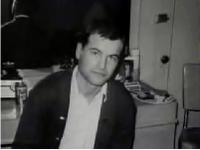 Rader was first sent to Lackland Air Force Base in San Antonio, Texas for basic training. He spent time at Sheppard Air Force Base in Wichita Falls, Texas while doing technical training there. In early 1967 Rader was stationed at Brookley Air Force Base in Mobile, Alabama and appears to have been there until January, 1968, when he was sent to Kadena Air Force Base in Okinawa in the west Pacific. (Keep in mind that Air Force personnel typically travel quite a bit regardless of where they are based.)
Rader was first sent to Lackland Air Force Base in San Antonio, Texas for basic training. He spent time at Sheppard Air Force Base in Wichita Falls, Texas while doing technical training there. In early 1967 Rader was stationed at Brookley Air Force Base in Mobile, Alabama and appears to have been there until January, 1968, when he was sent to Kadena Air Force Base in Okinawa in the west Pacific. (Keep in mind that Air Force personnel typically travel quite a bit regardless of where they are based.) Rader remained stationed in Okinawa for six months. In July 1968 he was moved to mainland Japan, stationed at the large Tachikawa Air Base located near Tokyo. He appears to have been based there until the end of his service in 1970. By his own description, he also spent time in Korea, Greece and Turkey while serving in the Air Force.
Rader remained stationed in Okinawa for six months. In July 1968 he was moved to mainland Japan, stationed at the large Tachikawa Air Base located near Tokyo. He appears to have been based there until the end of his service in 1970. By his own description, he also spent time in Korea, Greece and Turkey while serving in the Air Force.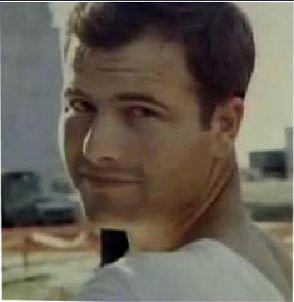 Rader's four years on active duty in the Air Force appear to have been unremarkble. He attained the rank of sargeant and worked in the installation of antenna equipment, among other tasks. One former buddy from those times was totally shocked when he found out Rader was BTK in 2005. Dennis was just one of the guys, he said, just sort of blended in. From his later admissions, Rader says he did troll for victims during those years but didn't attack anyone. He did use prostitutes while in Asia, but says he was disappointed they wouldn't participate in any bondage activities with him. Rader received the Air Force Good Conduct Medal, the Small Arms Expert Marksmanship Ribbon and the National Defense Service Medal, was discharged from active duty in the summer of 1970 and returned to his home town of Wichita, Kansas. He would serve two more years in the reserves.
Rader's four years on active duty in the Air Force appear to have been unremarkble. He attained the rank of sargeant and worked in the installation of antenna equipment, among other tasks. One former buddy from those times was totally shocked when he found out Rader was BTK in 2005. Dennis was just one of the guys, he said, just sort of blended in. From his later admissions, Rader says he did troll for victims during those years but didn't attack anyone. He did use prostitutes while in Asia, but says he was disappointed they wouldn't participate in any bondage activities with him. Rader received the Air Force Good Conduct Medal, the Small Arms Expert Marksmanship Ribbon and the National Defense Service Medal, was discharged from active duty in the summer of 1970 and returned to his home town of Wichita, Kansas. He would serve two more years in the reserves.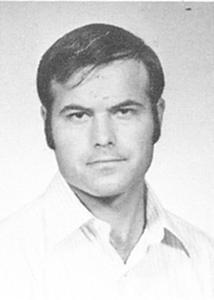 Less than a year after his return to Wichita, on May 22, 1971 Dennis Rader and Paula Dietz were married. Paula was also from the same area and had attended the same high school. She was also a fellow Lutheran. Dennis was 26, Paula was 23 when they got married. They settled in Park City, not far from the Rader home in north Wichita. Dennis was working in the meat department of an IGA supermarket, Paula was a bookkeeper. In 1972 Rader went to work at the Coleman Co., a manufacturer of camping supplies and Wichita's largest employer at the time. He worked 13 months there until July 1973. Rader then found employment with Cessna, manufacturer of small aircraft. He was also attending Butler County Community College in El Dorado, and earned an Associate's (2 year) degree in Electronics in 1973.
Less than a year after his return to Wichita, on May 22, 1971 Dennis Rader and Paula Dietz were married. Paula was also from the same area and had attended the same high school. She was also a fellow Lutheran. Dennis was 26, Paula was 23 when they got married. They settled in Park City, not far from the Rader home in north Wichita. Dennis was working in the meat department of an IGA supermarket, Paula was a bookkeeper. In 1972 Rader went to work at the Coleman Co., a manufacturer of camping supplies and Wichita's largest employer at the time. He worked 13 months there until July 1973. Rader then found employment with Cessna, manufacturer of small aircraft. He was also attending Butler County Community College in El Dorado, and earned an Associate's (2 year) degree in Electronics in 1973.In the fall of 1973 Rader began his studies at Wichita State University. It would take him six more years of night school to earn his degree. He was a poor student, even by his own description, a chronic C minus or D level. He couldn't spell and may have had a learning disability reflected in his unusually bad written grammar. In late 1973 he was let go by Cessna. He found himself in a low frame of mind, unemployed, unhappy, with time on his hands. He slipped deeper into the fantasy world he had known since childhood and wanted to know: what would it feel like to strangle somebody to death?
Next chapter: 1974

